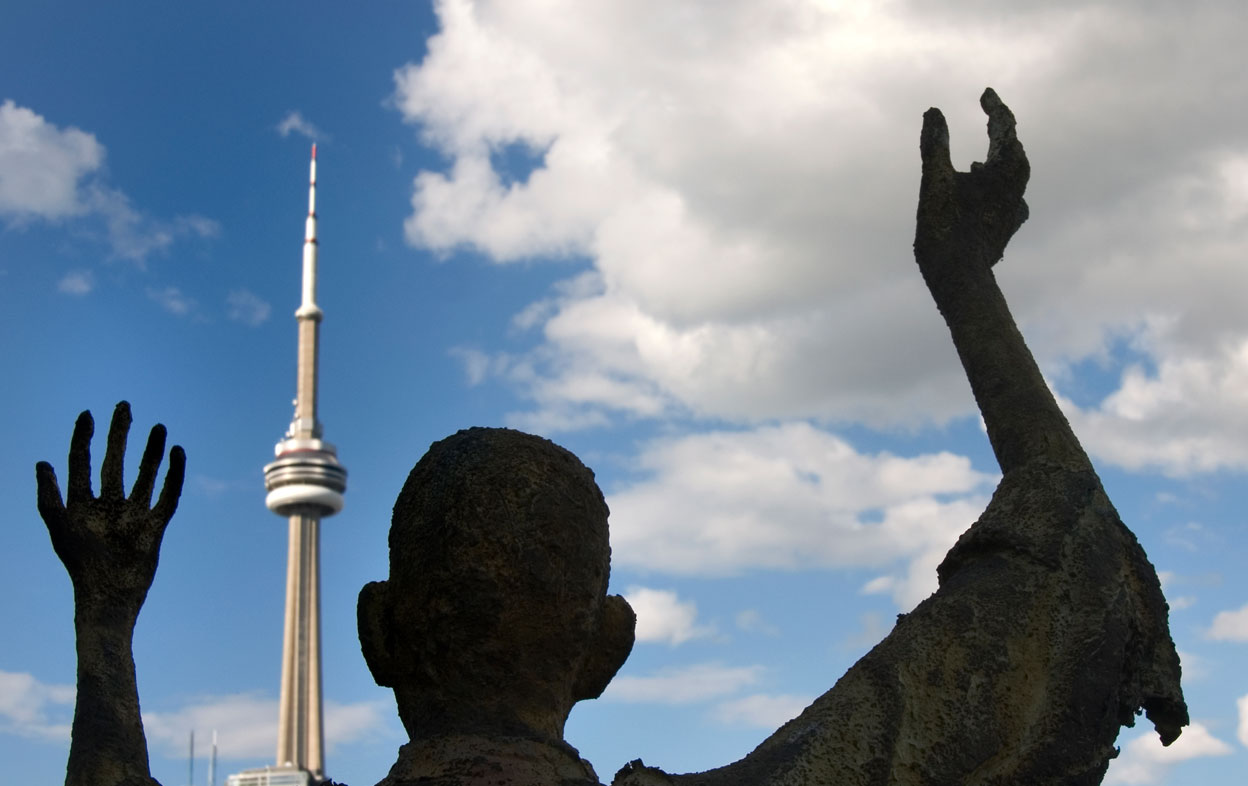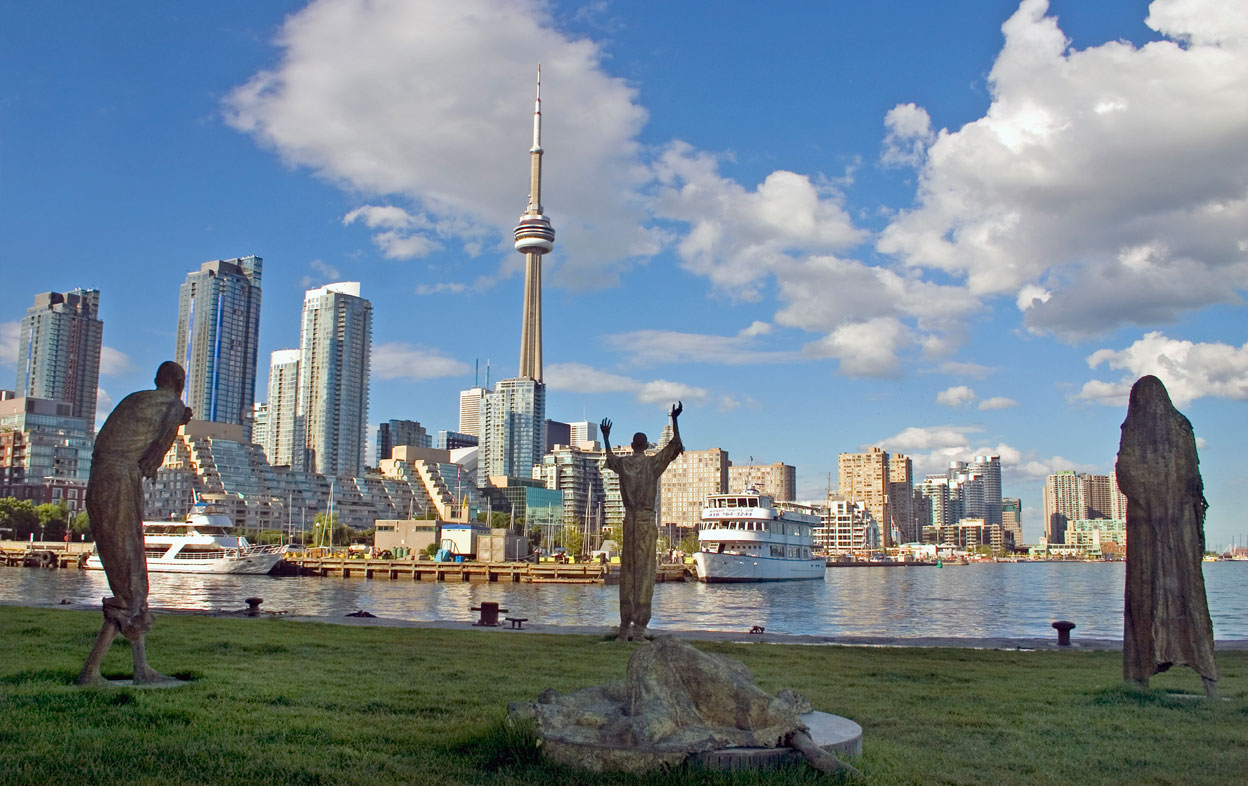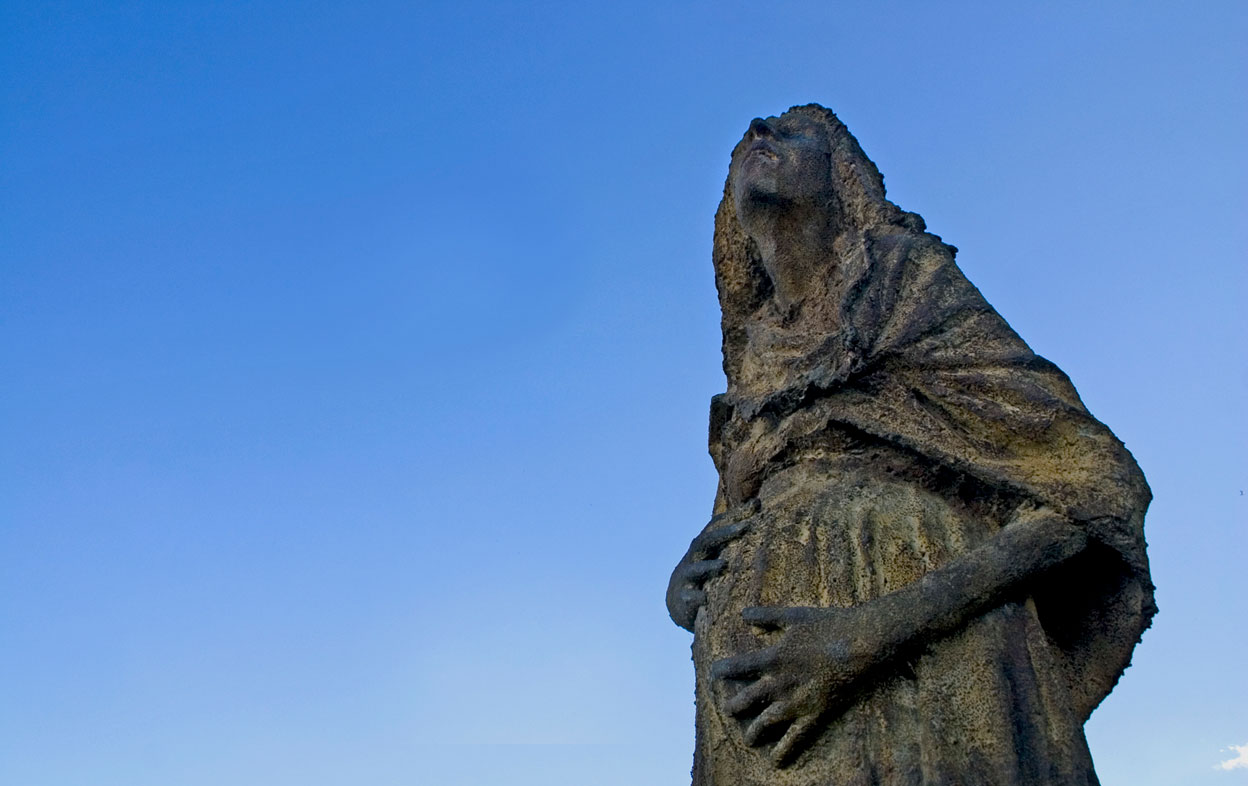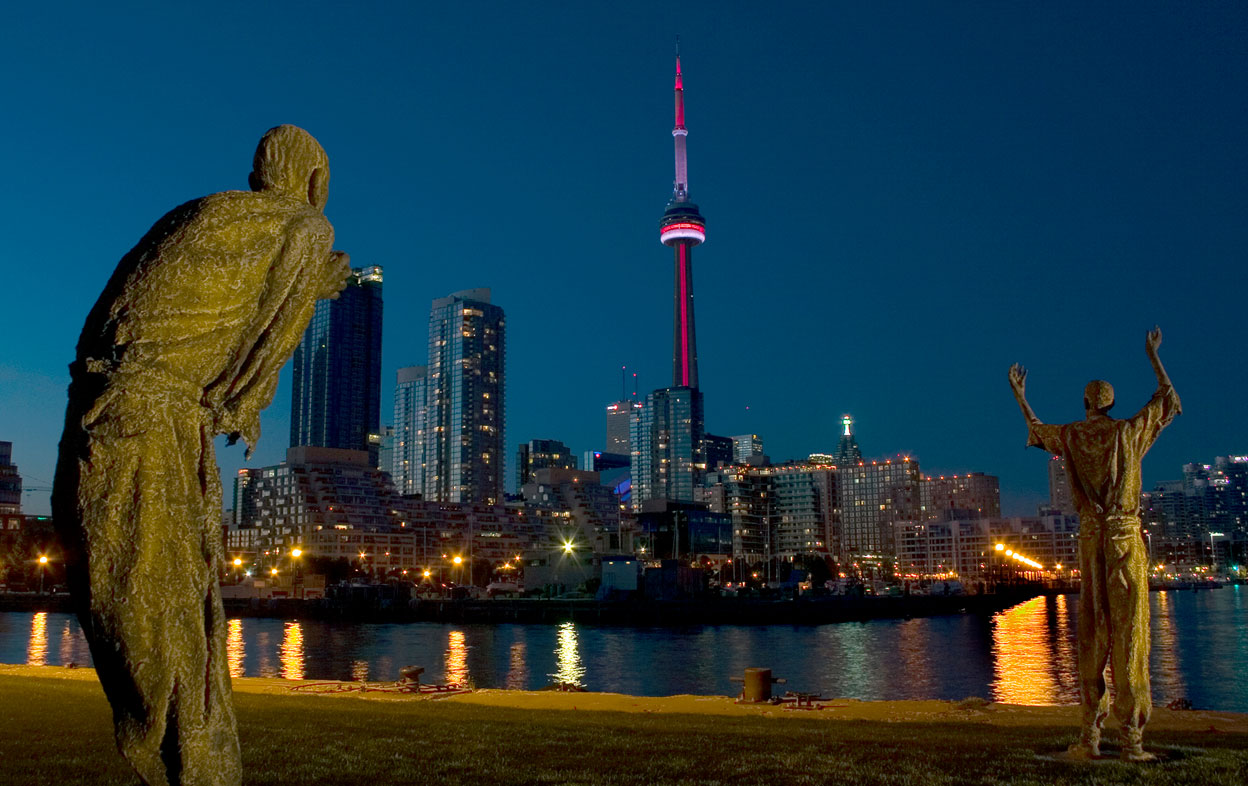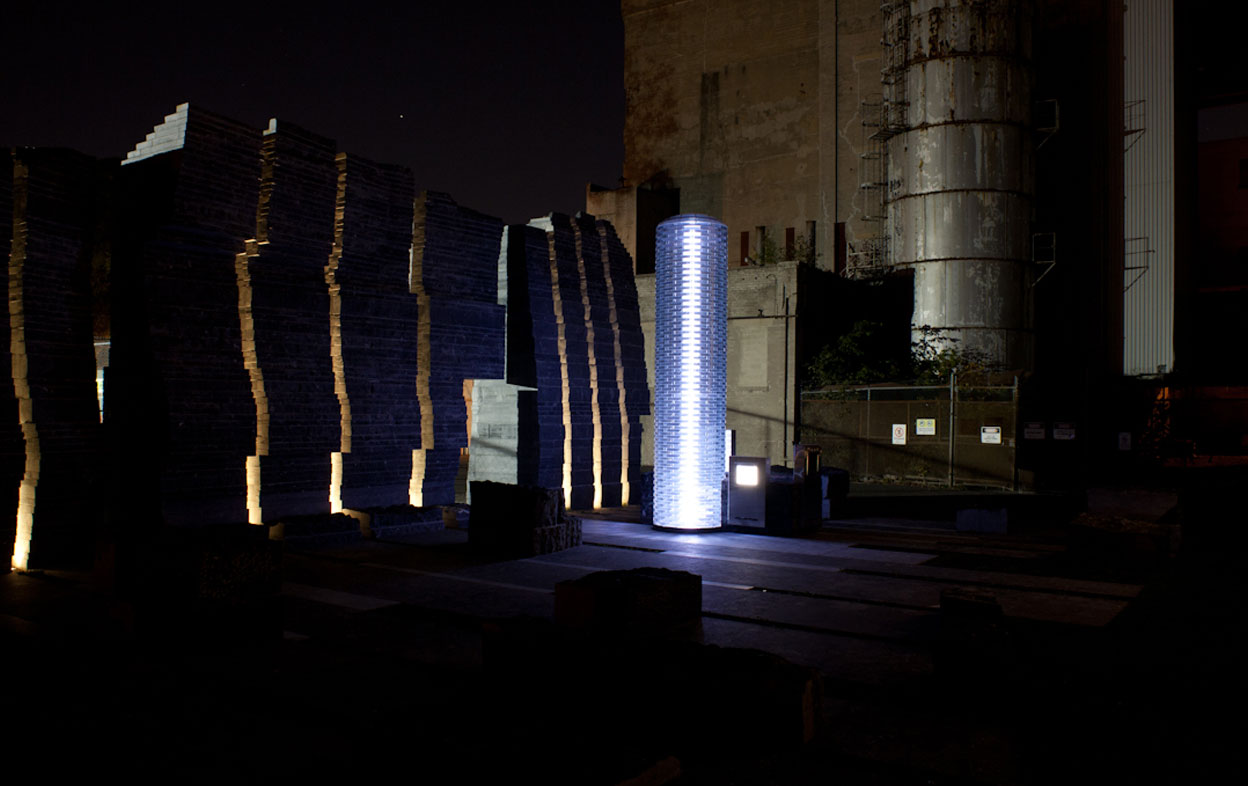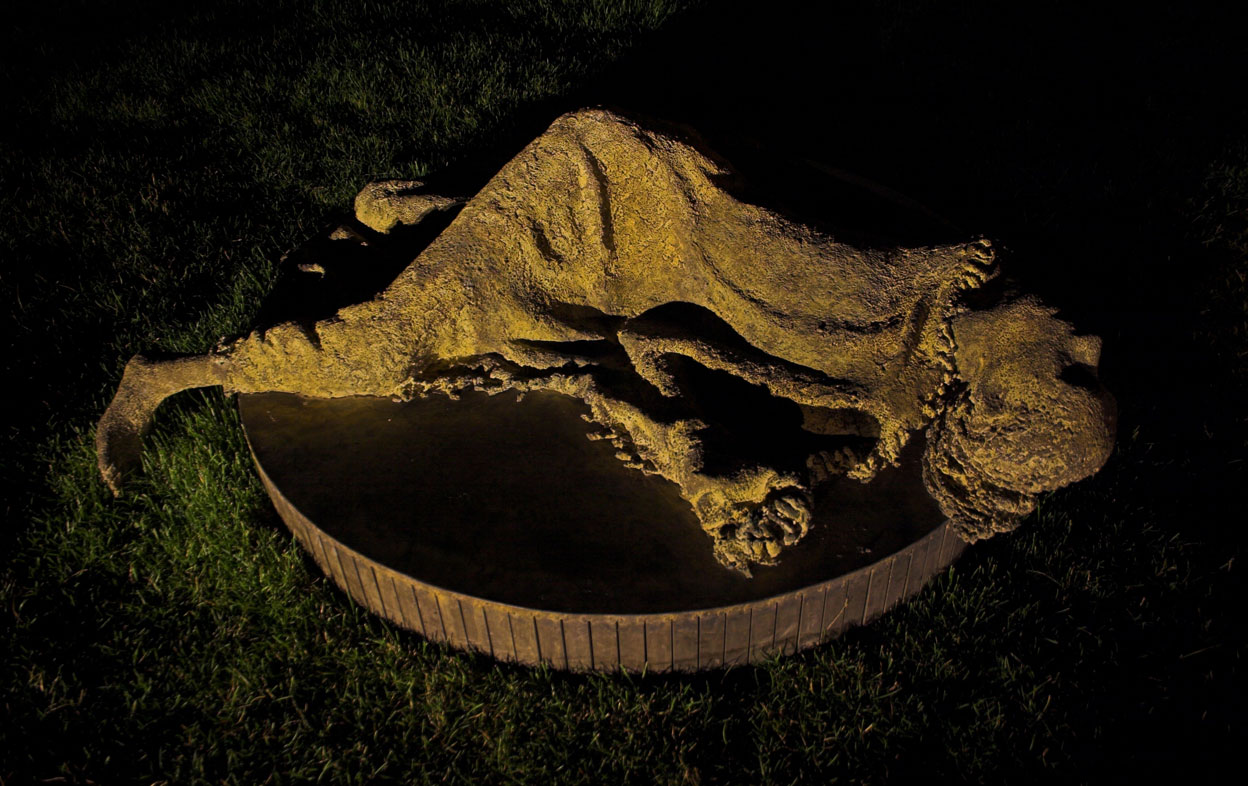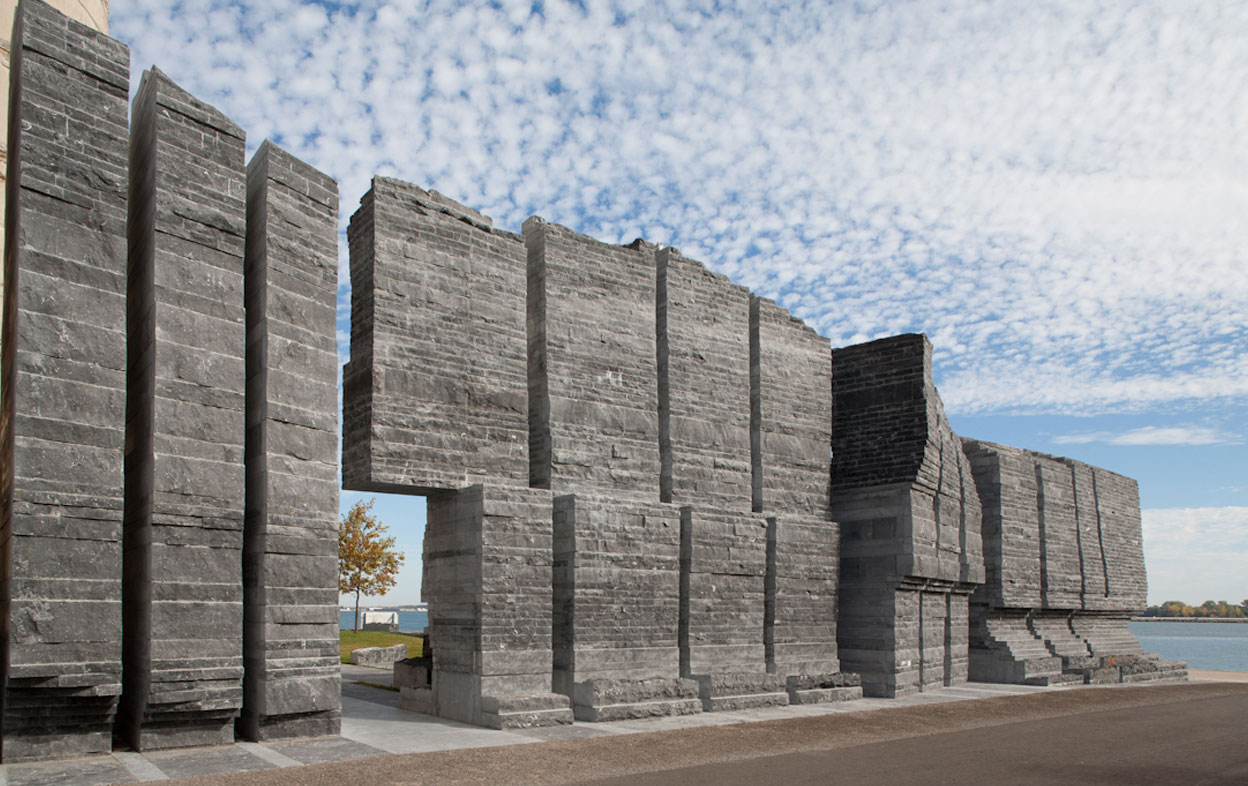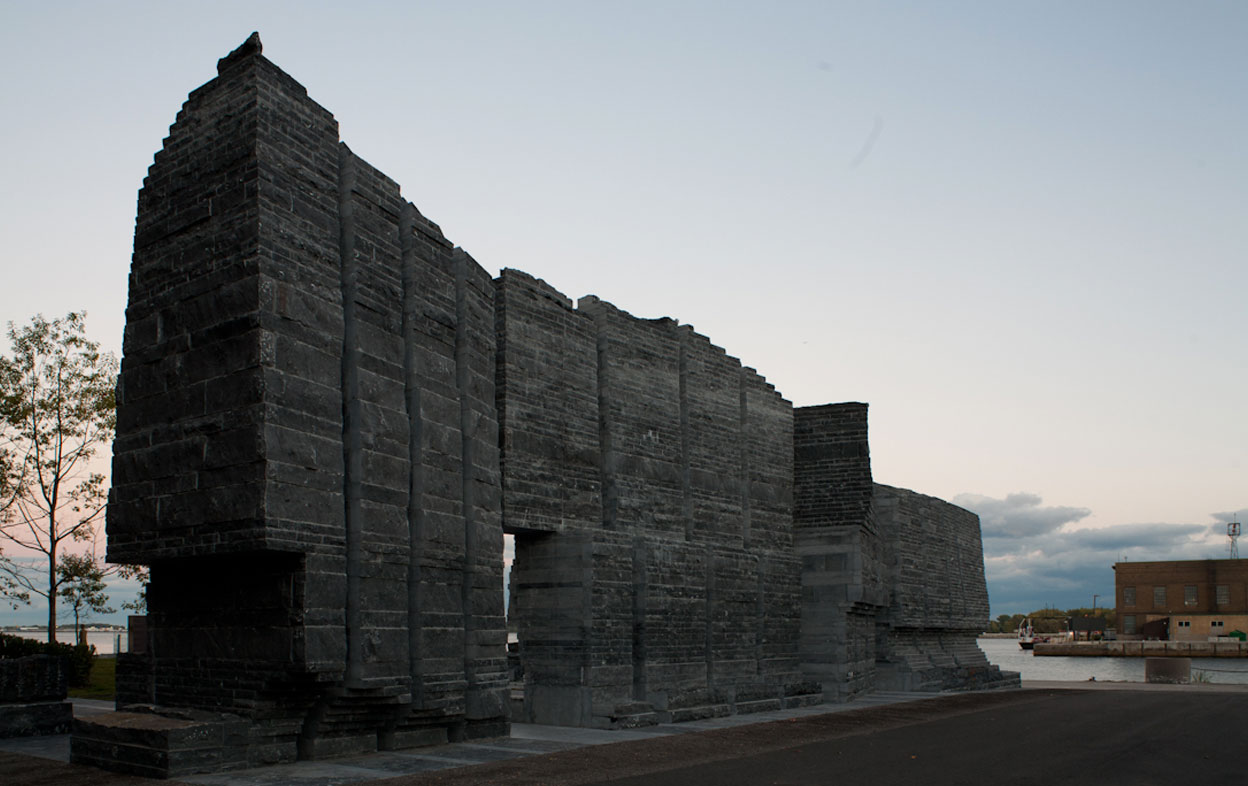Ireland Park
Ireland Park is the principal memorial to the Irish Famine experience in Toronto. It is a bridge from the past to the future. It is the story of a destitute people overcoming unimaginable hardship and suffering. It speaks to the kindness and generosity of Canadians—traits which are as consistent now as in 1847.
Ireland Park commemorates the Irish migrants who came to Toronto in 1847, and by dint of its presence, summons stories of their descendants who survived and went on to build the city, to contribute to the growth of Ontario and of Canada.
Ireland Park is a cemetery without bodies. It is a quiet contemplative place on the Toronto waterfront, slightly removed to the west. It is a park made up of a limestone sculptural wall, a glass tower as a beacon of inspiration and hope to migrants from other parts of the world today, and five bronze sculptures by Rowan Gillespie.
The principal figure of a tall man is depicted with his arms raised in exaltation at the prospect of Toronto before him. Standing to the rear of this figure is a pregnant woman, whose condition speaks to the prospect of new life and hope in a new land. In contrast, another woman is depicted collapsed to the ground in the last moments of life. Further behind these figures stands a young boy, whose clumsily gathered hands suggest his apprehension about his future. Completing the group stands a male figure ‘Pius Mulvey’, inspired by Joseph O’Connor’s book ‘Star of the Sea’.
Canada Ireland Foundation
Grasett Park
In the summer of 1847, at a time when the City of Toronto had a population of no more than 20,000 inhabitants, 38,560 Irish migrants landed on the city’s waterfront. The administrative powers of Toronto mounted what would have been a gargantuan task to assess, process, and filter this number of people through the city and onwards to their destinations. At the center of this effort was the City’s medical profession, which had to attend to the those afflicted with Typhus, an incurable and often fatal illness which was rampant amongst the migrants. Dr George Robert Grasett and many of his fellow doctors, emigration agents, nurses, and orderlies gave their lives in caring for Irish Famine emigrants.
Dr. George Robert Grasett Park is their story.
These notable individuals played a pivotal role in a period of great transition in Toronto and in Canada. The essential medical and humanitarian service they provided to the newly arrived and desperate Irish migrants laid the foundation for the Canada we know today. These people not only aided the influx of Irish migrants who became the ancestors of modern day Canadians, but also established a heritage of kindness to those less fortunate than themselves that carries on to this very day. It is with this in mind that Canada Ireland Foundation wishes to remind those who pass this park that the sacrifice of these individuals is not just the legacy of the past, but a legacy that enriches our present and inspires our future.
Grasett Park

